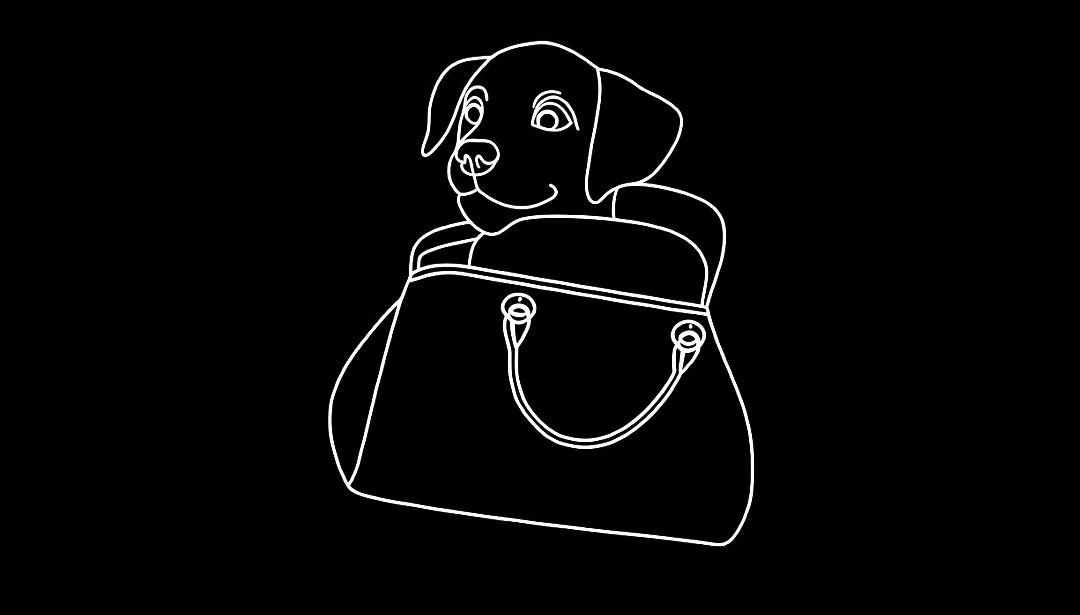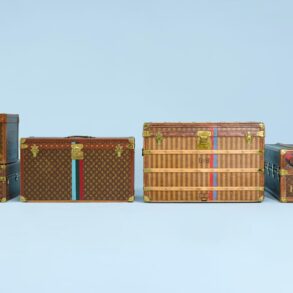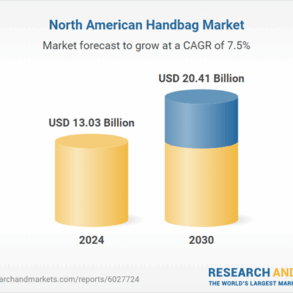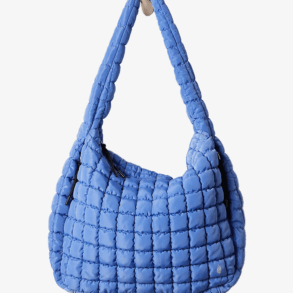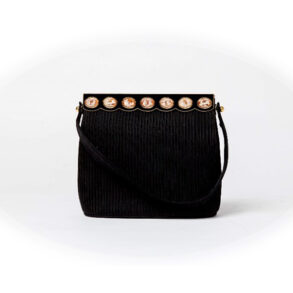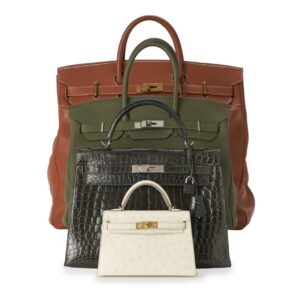Apr 10, 2025
IndexBox has just published a new report: Africa – Handbags – Market Analysis, Forecast, Size, Trends And Insights.
The handbag market in Africa is expected to see steady growth over the next decade, with a forecasted CAGR of +1.4% in volume and +2.6% in value from 2024 to 2035. This upward consumption trend indicates increasing demand for handbags in the region, presenting opportunities for growth and expansion.
Market Forecast
Driven by increasing demand for handbags in Africa, the market is expected to continue an upward consumption trend over the next decade. Market performance is forecast to decelerate, expanding with an anticipated CAGR of +1.4% for the period from 2024 to 2035, which is projected to bring the market volume to 281M units by the end of 2035.
In value terms, the market is forecast to increase with an anticipated CAGR of +2.6% for the period from 2024 to 2035, which is projected to bring the market value to $2.7B (in nominal wholesale prices) by the end of 2035.

Consumption
Africa’s Consumption of Handbags
In 2024, the amount of handbags consumed in Africa stood at 240M units, surging by 5% against the year before. The total consumption indicated a moderate increase from 2013 to 2024: its volume increased at an average annual rate of +4.0% over the last eleven years. The trend pattern, however, indicated some noticeable fluctuations being recorded throughout the analyzed period. Based on 2024 figures, consumption decreased by -2.6% against 2022 indices. Over the period under review, consumption attained the peak volume at 246M units in 2022; however, from 2023 to 2024, consumption failed to regain momentum.
The revenue of the handbag market in Africa expanded markedly to $2B in 2024, with an increase of 7.2% against the previous year. This figure reflects the total revenues of producers and importers (excluding logistics costs, retail marketing costs, and retailers’ margins, which will be included in the final consumer price). Overall, consumption recorded a prominent expansion. The level of consumption peaked at $2.2B in 2022; however, from 2023 to 2024, consumption failed to regain momentum.
Consumption By Country
The countries with the highest volumes of consumption in 2024 were Ethiopia (64M units), South Africa (44M units) and Kenya (28M units), together accounting for 57% of total consumption. Madagascar, Cameroon, Angola, Chad, Rwanda, Tunisia and Egypt lagged somewhat behind, together accounting for a further 29%.
From 2013 to 2024, the most notable rate of growth in terms of consumption, amongst the key consuming countries, was attained by Egypt (with a CAGR of +14.9%), while consumption for the other leaders experienced more modest paces of growth.
In value terms, Ethiopia ($699M), Chad ($527M) and Tunisia ($261M) constituted the countries with the highest levels of market value in 2024, with a combined 73% share of the total market.
Ethiopia, with a CAGR of +11.3%, recorded the highest growth rate of market size among the main consuming countries over the period under review, while market for the other leaders experienced more modest paces of growth.
The countries with the highest levels of handbag per capita consumption in 2024 were South Africa (716 units per 1000 persons), Rwanda (533 units per 1000 persons) and Madagascar (522 units per 1000 persons).
From 2013 to 2024, the most notable rate of growth in terms of consumption, amongst the key consuming countries, was attained by Egypt (with a CAGR of +12.7%), while consumption for the other leaders experienced more modest paces of growth.
Production
Africa’s Production of Handbags
In 2024, the amount of handbags produced in Africa rose to 162M units, increasing by 5% against 2023 figures. The total production indicated a pronounced increase from 2013 to 2024: its volume increased at an average annual rate of +3.7% over the last eleven-year period. The trend pattern, however, indicated some noticeable fluctuations being recorded throughout the analyzed period. Based on 2024 figures, production decreased by -4.5% against 2022 indices. The most prominent rate of growth was recorded in 2022 with an increase of 22%. As a result, production reached the peak volume of 170M units. From 2023 to 2024, production growth remained at a somewhat lower figure.
In value terms, handbag production stood at $2B in 2024 estimated in export price. Over the period under review, production showed a resilient expansion. The most prominent rate of growth was recorded in 2018 with an increase of 42%. Over the period under review, production hit record highs at $2.1B in 2022; however, from 2023 to 2024, production stood at a somewhat lower figure.
Production By Country
The country with the largest volume of handbag production was Ethiopia (63M units), accounting for 39% of total volume. Moreover, handbag production in Ethiopia exceeded the figures recorded by the second-largest producer, Kenya (27M units), twofold. Madagascar (16M units) ranked third in terms of total production with a 9.8% share.
From 2013 to 2024, the average annual rate of growth in terms of volume in Ethiopia amounted to +4.4%. In the other countries, the average annual rates were as follows: Kenya (+6.7% per year) and Madagascar (+1.9% per year).
Imports
Africa’s Imports of Handbags
In 2024, the amount of handbags imported in Africa rose slightly to 83M units, surging by 3.2% against the previous year. Total imports indicated perceptible growth from 2013 to 2024: its volume increased at an average annual rate of +4.5% over the last eleven years. The trend pattern, however, indicated some noticeable fluctuations being recorded throughout the analyzed period. The most prominent rate of growth was recorded in 2021 with an increase of 45%. Over the period under review, imports hit record highs in 2024 and are expected to retain growth in the immediate term.
In value terms, handbag imports expanded remarkably to $303M in 2024. Total imports indicated a noticeable expansion from 2013 to 2024: its value increased at an average annual rate of +4.9% over the last eleven years. The trend pattern, however, indicated some noticeable fluctuations being recorded throughout the analyzed period. Based on 2024 figures, imports increased by +90.1% against 2020 indices. The growth pace was the most rapid in 2021 when imports increased by 47%. Over the period under review, imports attained the maximum in 2024 and are likely to see steady growth in the near future.
Imports By Country
South Africa prevails in imports structure, finishing at 47M units, which was near 57% of total imports in 2024. Egypt (6.2M units) took a 7.5% share (based on physical terms) of total imports, which put it in second place, followed by Guinea (5.1%). Angola (3.6M units), Algeria (2.4M units), Mauritius (2.3M units), Morocco (1.9M units), Ethiopia (1.6M units), Ghana (1.4M units) and Uganda (1.3M units) held a minor share of total imports.
Imports into South Africa increased at an average annual rate of +9.1% from 2013 to 2024. At the same time, Guinea (+19.0%), Egypt (+14.9%), Ghana (+6.6%), Angola (+5.8%), Morocco (+4.9%), Ethiopia (+4.3%) and Mauritius (+1.8%) displayed positive paces of growth. Moreover, Guinea emerged as the fastest-growing importer imported in Africa, with a CAGR of +19.0% from 2013-2024. Uganda experienced a relatively flat trend pattern. By contrast, Algeria (-2.1%) illustrated a downward trend over the same period. While the share of South Africa (+22 p.p.), Egypt (+4.9 p.p.) and Guinea (+3.9 p.p.) increased significantly in terms of the total imports from 2013-2024, the share of Algeria (-3 p.p.) displayed negative dynamics. The shares of the other countries remained relatively stable throughout the analyzed period.
In value terms, South Africa ($77M), Morocco ($39M) and Algeria ($12M) were the countries with the highest levels of imports in 2024, together accounting for 42% of total imports. Guinea, Ethiopia, Egypt, Ghana, Mauritius, Angola and Uganda lagged somewhat behind, together comprising a further 14%.
In terms of the main importing countries, Guinea, with a CAGR of +11.9%, saw the highest rates of growth with regard to the value of imports, over the period under review, while purchases for the other leaders experienced more modest paces of growth.
Imports By Type
Handbags with outer surface of plastic sheeting or of textile materials represented the key type of handbags in Africa, with the volume of imports accounting for 69M units, which was near 74% of total imports in 2024. Handbags with outer surface of vulcanised fibre or of paperboard (18M units) took the second position in the ranking, distantly followed by handbags with outer surface of leather, composition leather, or patent leather (6.1M units). All these products together took approx. 26% share of total imports.
Imports of handbags with outer surface of plastic sheeting or of textile materials increased at an average annual rate of +6.2% from 2013 to 2024. At the same time, handbags with outer surface of leather, composition leather, or patent leather (+10.3%) displayed positive paces of growth. Moreover, handbags with outer surface of leather, composition leather, or patent leather emerged as the fastest-growing type imported in Africa, with a CAGR of +10.3% from 2013-2024. By contrast, handbags with outer surface of vulcanised fibre or of paperboard (-3.6%) illustrated a downward trend over the same period. While the share of handbags with outer surface of plastic sheeting or of textile materials (+19 p.p.) and handbags with outer surface of leather, composition leather, or patent leather (+3.3 p.p.) increased significantly in terms of the total imports from 2013-2024, the share of handbags with outer surface of vulcanised fibre or of paperboard (-22.2 p.p.) displayed negative dynamics.
In value terms, handbags with outer surface of plastic sheeting or of textile materials ($166M) constitutes the largest type of handbags imported in Africa, comprising 56% of total imports. The second position in the ranking was held by handbags with outer surface of vulcanised fibre or of paperboard ($69M), with a 23% share of total imports.
From 2013 to 2024, the average annual growth rate of the value of handbags with outer surface of plastic sheeting or of textile materials imports stood at +5.5%. With regard to the other imported products, the following average annual rates of growth were recorded: handbags with outer surface of vulcanised fibre or of paperboard (+1.3% per year) and handbags with outer surface of leather, composition leather, or patent leather (+4.9% per year).
Import Prices By Type
The import price in Africa stood at $3.7 per unit in 2024, rising by 9.3% against the previous year. Overall, the import price saw a relatively flat trend pattern. The most prominent rate of growth was recorded in 2014 when the import price increased by 14%. As a result, import price reached the peak level of $4 per unit. From 2015 to 2024, the import prices failed to regain momentum.
Prices varied noticeably by the product type; the product with the highest price was handbags with outer surface of leather, composition leather, or patent leather ($10 per unit), while the price for handbags with outer surface of plastic sheeting or of textile materials ($2.4 per unit) was amongst the lowest.
From 2013 to 2024, the most notable rate of growth in terms of prices was attained by handbags with outer surface of vulcanised fibre or of paperboard (+5.1%), while the other products experienced a decline in the import price figures.
Import Prices By Country
In 2024, the import price in Africa amounted to $3.7 per unit, picking up by 9.3% against the previous year. In general, the import price showed a relatively flat trend pattern. The most prominent rate of growth was recorded in 2014 an increase of 14%. As a result, import price reached the peak level of $4 per unit. From 2015 to 2024, the import prices remained at a somewhat lower figure.
Prices varied noticeably by country of destination: amid the top importers, the country with the highest price was Morocco ($20 per unit), while Angola ($695 per thousand units) was amongst the lowest.
From 2013 to 2024, the most notable rate of growth in terms of prices was attained by Algeria (+12.6%), while the other leaders experienced more modest paces of growth.
Exports
Africa’s Exports of Handbags
After two years of growth, shipments abroad of handbags decreased by -17.2% to 5.5M units in 2024. The total export volume increased at an average annual rate of +2.6% over the period from 2013 to 2024; however, the trend pattern indicated some noticeable fluctuations being recorded throughout the analyzed period. The most prominent rate of growth was recorded in 2017 when exports increased by 32%. Over the period under review, the exports reached the peak figure at 6.7M units in 2023, and then dropped remarkably in the following year.
In value terms, handbag exports contracted to $90M in 2024. The total export value increased at an average annual rate of +1.6% over the period from 2013 to 2024; however, the trend pattern indicated some noticeable fluctuations being recorded throughout the analyzed period. The pace of growth appeared the most rapid in 2014 with an increase of 24%. The level of export peaked at $101M in 2023, and then reduced in the following year.
Exports By Country
South Africa was the key exporter of handbags in Africa, with the volume of exports reaching 2.3M units, which was approx. 43% of total exports in 2024. Morocco (1,251K units) ranks second in terms of the total exports with a 23% share, followed by Tunisia (16%) and Mauritius (7.4%). Ethiopia (158K units), Rwanda (88K units) and Ghana (84K units) took a minor share of total exports.
From 2013 to 2024, the biggest increases were recorded for Ghana (with a CAGR of +38.4%), while shipments for the other leaders experienced more modest paces of growth.
In value terms, the largest handbag supplying countries in Africa were Tunisia ($34M), Morocco ($26M) and South Africa ($13M), with a combined 81% share of total exports. Mauritius, Ethiopia, Rwanda and Ghana lagged somewhat behind, together comprising a further 11%.
Among the main exporting countries, Rwanda, with a CAGR of +23.9%, recorded the highest rates of growth with regard to the value of exports, over the period under review, while shipments for the other leaders experienced more modest paces of growth.
Exports By Type
In 2024, handbags with outer surface of plastic sheeting or of textile materials (2.9M units) was the largest type of handbags, constituting 50% of total exports. Handbags with outer surface of leather, composition leather, or patent leather (1.7M units) took a 29% share (based on physical terms) of total exports, which put it in second place, followed by handbags with outer surface of vulcanised fibre or of paperboard (20%).
From 2013 to 2024, the biggest increases were recorded for handbags with outer surface of plastic sheeting or of textile materials (with a CAGR of +6.8%), while shipments for the other products experienced mixed trends in the exports figures.
In value terms, handbags with outer surface of leather, composition leather, or patent leather ($64M) remains the largest type of handbags supplied in Africa, comprising 69% of total exports. The second position in the ranking was taken by handbags with outer surface of plastic sheeting or of textile materials ($17M), with an 18% share of total exports.
From 2013 to 2024, the average annual rate of growth in terms of the value of handbags with outer surface of leather, composition leather, or patent leather exports was relatively modest. For the other products, the average annual rates were as follows: handbags with outer surface of plastic sheeting or of textile materials (-2.4% per year) and handbags with outer surface of vulcanised fibre or of paperboard (+3.3% per year).
Export Prices By Type
The export price in Africa stood at $16 per unit in 2024, growing by 7.7% against the previous year. Over the period under review, the export price, however, continues to indicate a mild contraction. The most prominent rate of growth was recorded in 2021 when the export price increased by 48%. Over the period under review, the export prices hit record highs at $18 per unit in 2013; however, from 2014 to 2024, the export prices remained at a lower figure.
There were significant differences in the average prices amongst the major exported products. In 2024, the product with the highest price was handbags with outer surface of leather, composition leather, or patent leather ($38 per unit), while the average price for exports of handbags with outer surface of plastic sheeting or of textile materials ($5.8 per unit) was amongst the lowest.
From 2013 to 2024, the most notable rate of growth in terms of prices was attained by handbags with outer surface of leather, composition leather, or patent leather (+2.1%), while the other products experienced mixed trends in the export price figures.
Export Prices By Country
The export price in Africa stood at $16 per unit in 2024, picking up by 7.7% against the previous year. Overall, the export price, however, showed a slight decline. The most prominent rate of growth was recorded in 2021 when the export price increased by 48% against the previous year. Over the period under review, the export prices reached the maximum at $18 per unit in 2013; however, from 2014 to 2024, the export prices failed to regain momentum.
Prices varied noticeably by country of origin: amid the top suppliers, the country with the highest price was Tunisia ($37 per unit), while Ghana ($1.6 per unit) was amongst the lowest.
From 2013 to 2024, the most notable rate of growth in terms of prices was attained by Ethiopia (+19.2%), while the other leaders experienced more modest paces of growth.
Source: IndexBox Market Intelligence Platform
This post was originally published on this site be sure to check out more of their content.
